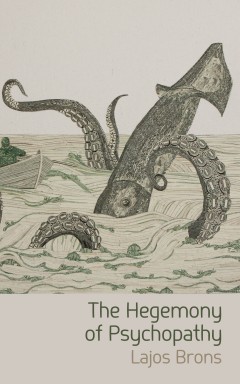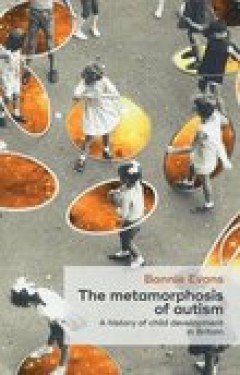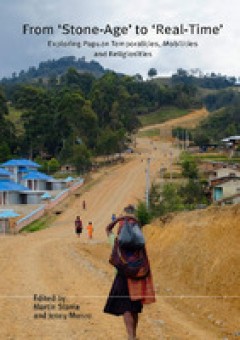Filter by

Literary coteries and the making of modern print culture
Literary Coteries and the Making of Modern Print Culture, 1740-1790 offers the first study of manuscript-producing coteries as an integral element of eighteenth-century Britain’s literary culture. As a corrective to literary histories assuming that the dominance of print meant the demise of a vital scribal culture, the book profiles four interrelated and influential coteries, focusing on each…
- Edition
- -
- ISBN/ISSN
- 9781107128163
- Collation
- -
- Series Title
- -
- Call Number
- 400 SCh l

Transition and transformation Victor Sjöström in Hollywood 1923-1930
In 1923, Victor Sjöström (1879-1960) got an offer from Goldwyn Pictures to come to Hollywood. This was nothing unusual for a successful European director: - Metro's bring - ing them in by car load - , as Photoplay stated in 1926. At the time, Sjöström was Sweden's most renowned director, who had become world famous for his austere and naturalistic film style. Sjöström stayed in Hollywood …
- Edition
- -
- ISBN/ISSN
- 9789089645043
- Collation
- 164 p.; 22 cm.
- Series Title
- Film Culture in Transition
- Call Number
- 792.8 FLO t

Adat and indigeneity in Indonesia - culture and entitlements between heterono…
A number of UN conventions and declarations (on the Rights of Indigenous Peoples, the Protection and Promotion of the Diversity of Cultural Expressions and the World Heritage Conventions) can be understood as instruments of international governance to promote democracy and social justice worldwide. In Indonesia (as in many other countries), these international agreements have encouraged the sel…
- Edition
- -
- ISBN/ISSN
- 9783863951320
- Collation
- 240 p.; 22 cm.
- Series Title
- Göttingen Studies inCultural Property, Volume 7
- Call Number
- 301 ADA a

Family therapy - new intervention programs and researches
This book is a collection of chapters written by a number of scientists from all over the world, who provide their insights not only into family therapy but also into new interesting interventions, programs, and research. The book adopts a perspective that respects the complexity of human beings and their family relationships. It devotes a space to the deepening of both psychological and social…
- Edition
- -
- ISBN/ISSN
- 9781789843019
- Collation
- 164 p.; 22 cm.
- Series Title
- -
- Call Number
- 306.8 FAM f

Perception of beauty
The authors in this book ask us to consider whether the perception of beauty has been defined by our genetics and culture over the years - has it grown and changed? Do certain neural connections define our emotional reactions to beauty? Does beauty follow any rules or laws? Can the aspiration toward beauty be detrimental? Can we divorce ourselves from dictates and sink into a mindful connection…
- Edition
- -
- ISBN/ISSN
- 9789535135814
- Collation
- 234 p.; 22 cm.
- Series Title
- -
- Call Number
- 612.67 PER p

The Hegemony of psychopathy
Any social and political arrangement depends on acceptance. If a substantial part of a people does not accept the authority of its rulers, then those can only remain in power by means of force, and even that use of force needs to be accepted to be effective. Gramsci called this acceptance of the socio-political status quo “hegemony.” Every stable state relies primarily on hegemony as a sour…
- Edition
- -
- ISBN/ISSN
- 9781947447165
- Collation
- 120 p.; 22 cm.
- Series Title
- -
- Call Number
- 157 BRO h

The metamorphosis of autism
"What is autism and where has it come from? Increased diagnostic rates, the rise of the 'neurodiversity' movement, and growing autism journalism, have recently fuelled autism's fame and controversy. The metamorphosis of autism is the first book to explain our fascination with autism by linking it to a longer history of childhood development. Drawing from a staggering array of primary sources, B…
- Edition
- -
- ISBN/ISSN
- 9780719095924
- Collation
- 512 p.; 22 cm.
- Series Title
- Social Histories of Medicine
- Call Number
- 616.8982 EVA m

From 'Stone-Age' to 'Real-Time': Exploring Papuan Temporalities, Mobilities a…
There are probably no other people on earth to whom the image of the ‘stone-age’ is so persistently attached than the inhabitants of the island of New Guinea, which is divided into independent Papua New Guinea and the western part of the island, known today as Papua and West Papua. From ‘Stone-Age’ to ‘Real-Time’ examines the forms of agency, frictions and anxieties the current mome…
- Edition
- -
- ISBN/ISSN
- 9781925022421
- Collation
- XIII, 270 p.
- Series Title
- -
- Call Number
- 995.1 MUN f

Mental imagery in clinical disorders
Mental imagery refers to the mental simulation or recreation of perceptual experience across different sensory modalities. The exploration of mental imagery represents a new and important area within clinical psychology, but arguably one still in its infancy. While mental imagery has featured prominently in recent theoretical accounts of disorders as diverse as post-traumatic stress disorder, p…
- Edition
- -
- ISBN/ISSN
- 9782889452620
- Collation
- 106 p.; 22 cm.
- Series Title
- -
- Call Number
- 362.2 PEA m

Empathy - an evidence-based interdisciplinary perspective
Empathy, a basic ability for understanding persons holistically, building supportive relationships, and listening attentively, includes being with suffering persons, healing, and inducing catharsis in them. Therefore, it is necessary within occupations supporting humans: education, clinical psychology, nursing, early childhood care, welfare, and medicine. Conversely, there are individual differ…
- Edition
- -
- ISBN/ISSN
- 9789535134534
- Collation
- 180 p.; 22 cm.
- Series Title
- -
- Call Number
- 155.4 EMP e
 Computer Science, Information & General Works
Computer Science, Information & General Works  Philosophy & Psychology
Philosophy & Psychology  Religion
Religion  Social Sciences
Social Sciences  Language
Language  Pure Science
Pure Science  Applied Sciences
Applied Sciences  Art & Recreation
Art & Recreation  Literature
Literature  History & Geography
History & Geography